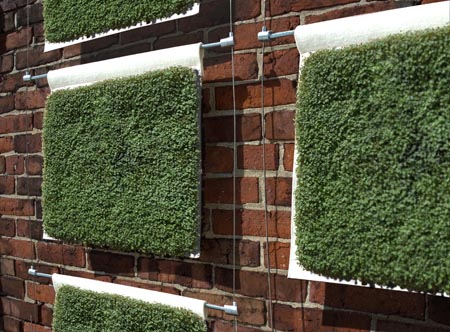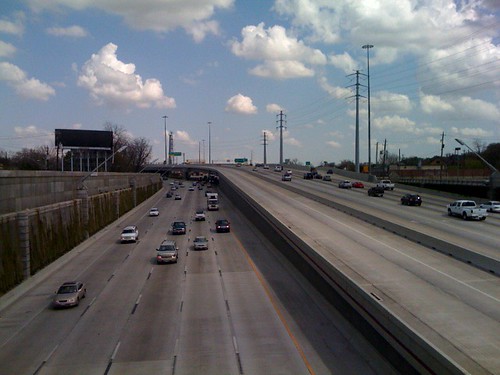 I just love moss... the color, the softness... its persistance. I recently dug out some clumps from my sidewalk and have it in a dish... sometimes I forget it's there and it doesn't look too great... but I spray it and it comes back to life in no time.
I just love moss... the color, the softness... its persistance. I recently dug out some clumps from my sidewalk and have it in a dish... sometimes I forget it's there and it doesn't look too great... but I spray it and it comes back to life in no time.Since they obtain all their nutrients from the air (moss has no true roots), moss plants require nothing more than shade, acidic soil, and adequate moisture to flourish. Moss also seems to prefer poor quality soils with low nutrient levels. SCORE!
Below are some "designed" examples using moss for inspiration.
-Home by Japanese firm NENDO


Moistscape - This is a cool moss installationinstallation using moss by frcll in NYC - "spatial configuration of these verdant planes - they vary in size, height and proximity to the visitor - creates a range of possible encounters."


Moss Covered Solar Powered Vending Machine-
Fuji Electric's solar powered vending machine, where the panels supply sufficient energy to heat and cool the beverages, while the moss covering "helps improve insulation.

Moss Installation and graffiti by Edina Tokodi


-A prototype green wall installation for the 2008 AIA convention in Boston in May - aims to transform a blank brick wall into ‘a lush green environment’, both bringing attention to underutilized sites in Boston and providing a green solution to improve public space in the city.

Actually i think these are sedum but i can easily see how it could be moss. :)
TIP: Before utilizing moss as part of your shade gardening plans, the soil bed for the moss plants should first be tested to ensure that the pH is between 5.0 and 6.0 (lower is o.k. - 6.5 is max., but not ideal).
LINKS:
+ Wall Greening System Using Moss
+Moss Acres on HGTV
+Moss Gardening: Including Lichens, Liverworts and Other Miniatures [ILLUSTRATED] (Hardcover)

+ Recipe for Moss Graffiti















